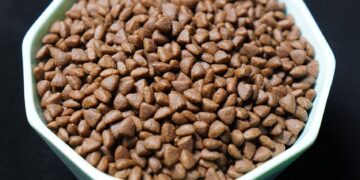Ultimate Guide to Choosing the Best Dog Health Food for Your Furry Friend
As a dog owner, one of the most crucial decisions you make for your furry friend’s well-being is what to feed them. Choosing the right dog health food ensures not only longevity but also a vibrant, energetic life for your pet. This guide will provide you with everything you need to know to make the best choice for your dog’s diet.
Understanding Your Dog’s Nutritional Needs
Age, Weight, and Activity Level
Every dog is unique, and their nutritional needs change over their lifetime. Puppies, for instance, require more calories and specific nutrients to support their rapid growth, compared to adult dogs who need a balanced diet to maintain their health. Senior dogs might need fewer calories but more of certain nutrients to help manage health issues like arthritis. Additionally, a highly active dog will require a more energy-dense food compared to a more sedentary one.
Special Health Considerations
Does your dog have special dietary needs due to health conditions like allergies, diabetes, or obesity? These factors heavily influence the type of food that will be most beneficial. For instance, dogs with allergies may require a diet free from common allergens like chicken, beef, corn, or wheat.
Choosing the Right Type of Dog Food
Dry Food (Kibble)
Kibble is the most widely used type of dog food due to its convenience and long shelf life. When shopping for kibble, look for products that list real meat as the first ingredient and don’t contain unnecessary fillers like corn or soy.
Wet Food (Canned)
Wet food is often more palatable for dogs and can be a better option for hydration, especially for dogs that are reluctant to drink enough water. Ensure the canned food you choose is balanced and complete for your dog’s stage of life.
Raw Food
A raw diet closely mimics what dogs would eat in the wild and can include raw meat, bones, fruits, and vegetables. It’s important to consult with a veterinarian before starting a raw diet to ensure your dog gets a balanced intake of nutrients.
Specialty Diets
These diets are formulated for specific health issues or dietary needs. They can include grain-free, weight management, or hypoallergenic options. Always discuss these choices with your vet to make sure they’re a good fit for your pet’s health requirements.
Reading and Understanding Food Labels
Understanding pet food labels can feel like decoding a complex puzzle, but it’s vital for choosing high-quality food. Here are some key things to look out for:
Ingredients List
The ingredients in dog food are listed by weight. Look for foods that have a protein source, such as chicken or beef, as the first ingredient. This suggests that the food likely contains a substantial amount of real meat.
Nutritional Adequacy Statement
This statement indicates whether the dog food is complete and balanced for a particular life stage, according to the Association of American Feed Control Officials (AAFCO). This organization sets standards for pet foods in the United States.
Feeding Guidelines
These guidelines offer a starting point for how much to feed your dog based on size and activity level. However, observe your dog’s condition and adjust as necessary to maintain healthy weight and vitality.
Consulting with a Veterinary Nutritionist
If you’re still uncertain about what diet is best for your dog, considering a consultation with a veterinary nutritionist can be invaluable. These experts can provide personalized guidance based on your dog’s specific health needs, lifestyle, and other factors.
Useful Tips for Transitioning Dog Foods
Switching your dog’s food isn’t always straightforward and can sometimes lead to digestive upset if not done correctly. Here’s how to transition your dog to a new food smoothly:
Gradual Introduction
Start by mixing a small amount of the new food with the old, gradually increasing the proportion over the course of a week or more. This slow method helps prevent digestive issues.
Monitor Your Dog’s Reaction
Keep an eye on your dog’s reaction to the new diet. Look for signs of allergy or intolerance, such as itching, digestive upset, or changes in energy levels.
Final Thoughts
Choosing the right health food for your dog is a foundational aspect of pet care that affects their happiness and longevity. With the insights from this guide, you are well-equipped to make informed decisions that will enrich your dog’s life and strengthen the bond you share. Remember, when in doubt, always seek advice from your vet.














































